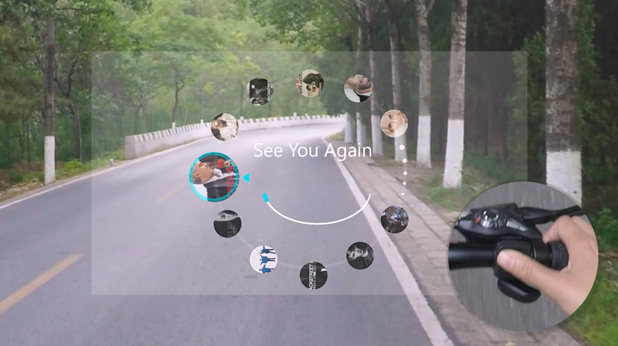It’s clear that the first version of Google Glass had an identity crisis — unless you count the Scoble shower incident. But let’s just call that a crisis… One problem with the wearable was there was no clear consumer proposition, so no reason for the public to want to sport the smart specs.
Google is apparently reworking Glass now, likely with a narrower, enterprise focus. And that makes a lot more sense. The traction that Glass had gained was for niche industrial use-cases. Mountain View is not the only company thinking this way either — Sony is also building smart specs with an enterprise bent.
So while VR headsets like Facebook’s Oculus Rift take aim at the gaming market, dangling the prospect of immersive entertainment (assuming you’re able to forget what a dork you look like IRL), makers of augmented reality specs are going after more specific and specialized niche use-cases.
To wit: meet Senth In1 — a pair of AR glasses, based on Android 4.3, being developed by a Beijing-based startup, specifically for cyclists. The team is currently raising crowdfunds via the Indiegogo platform with the aim of turning their prototype into a shipping product. At the time of writing they’re 85 per cent funded, with just over $34,000 pledged.

The glasses are being designed to work in conjunction with a thumb controller which is mounted on the bike’s handlebars, enabling the wearer to control a ring-based UI that allows them to choose different functions by swiping around a circle and pressing to select. The specs will also support other interaction methods, including a lateral touchpad on the side of the glasses, voice control and motion-sensing head movements for UI selections.
In terms of features the team is aiming to develop for their Insenth OS (atop the Android base), users will apparently be able to view their distance and speed via the glasses’ waveguide display, as well as link the hardware via Bluetooth to other sensing wearables they own to view other metrics such as heart rate or cadence; plus view maps and navigation directions as they ride; take photos and videos via an onboard camera; select and play music; and make phone calls and send voice messages.

The prototype is actually the fourth developed by the team, according to co-founder Li Jiwen, the other three being professional AR glasses. But with limited funds to support ongoing R&D — the team has apparently been working on AR glasses since 2012 — he says he made the decision to narrow the focus to try developing smart specs for cycling, which was also a personal interest.
The advantage of this sort of focus is of course having an established community to tailor the tech for and market the product to, rather than attempting to sell a vague general promise of AR’s benefits. Add to that, cyclists are already used to kitting themselves out in specialist gear — and their kit isn’t what the mainstream would recognize as fashionable, so there’s less likely to be any stigma associated with wearing a face computer out and about.
If the team meets its crowdfunding target, it says it’s aiming to get the Insenth In1 smart specs to market starting from this December — albeit that’s a pretty ambitious timeframe for such a complex product (and where hardware crowdfunders are concerned it’s always wise to expect delays).
Insenth’s glasses are being priced at $250 to Indiegogo early birds, undercutting the price of Recon Jet‘s rival smart specs which are also focused on the extreme sports space.
